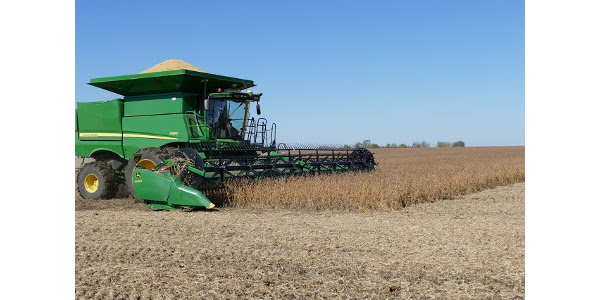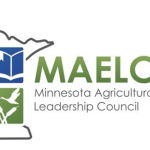Here are five takeaways on the use of fertilizer for soybean in Minnesota
MINNEAPOLIS — The addition of fertilizer can be an important part for profitable soybean production. While research on soybean fertility is ongoing in Minnesota, revisions to the soybean fertilizer guidelines encompassing more recent findings from research across the state are now available. Here are five takeaways on the use of fertilizer for soybean in Minnesota:
1. Nitrogen (N) fertilizer application for soybean is unlikely to pay off
Current guidelines suggest some N should be applied in northern Minnesota on fields where there is little or no history of soybean being grown or in situations where nodulation may be poor. Research has demonstrated that nitrogen fertilizer application can increase soybean grain yield in very high yield potential situations. However, in our research the amount of N required to increase yield has always been greater than the value of the yield increased by the fertilizer applied. This is true regardless of application timing or whether they are done as single or split applications. Remember, all sources of phosphorus fertilizer and some sources of sulfur contain some N, so you may already be applying some nitrogen fertilizer. It is false to assume that soybeans do not need nitrogen. Since soybean does nodulate, the goal should be to take advantage of the N fixed by the plant as much as possible and apply additional nitrogen only in situations where nodulation cannot supply nitrogen to the soybean crop.
2. You don’t need to apply phosphorus (P) or potassium (K) fertilizer directly ahead of soybean, unless on high pH soils
Our research still shows significant flexibility in terms of when P and K fertilizer can be applied within a crop rotation, specifically for the soybean crop. Many growers looking to boost soybean yield are now applying fertilizer every year, ahead of all crops including soybean. For P, we know that application ahead of soybean is important for high pH soils (8.0 or greater). In all other circumstances, the data show that soybean yield can still be maximized whenever P or K is applied in a crop rotation as long as soybean fertility is taken into account. Soybean yield is less impacted by timing compared to corn, which greatly benefits from P and K applied ahead of the crop in situations where P and K is needed. Where I would suggest considering every year application of P and K is on rented ground where P and K fertilization may not be as aggressive. Remember though to keep up on soil sampling to ensure soil tests are not too low where yield are limited or too high were fertilizer application will not pay and environmental loss of P could occur.
3. Should you consider an alternative K fertilizer source other than potassium chloride?
Recent research has been focused on whether the source of K is an important decision for soybean production. The most common source of K is potassium chloride. Current research is in place to determine if chloride truly reduces soybean yield in situations where potash is applied and soybean yield is reduced. Research has shown that the amount of potassium chloride applied ahead of the soybean crop should be limited to around 100 lbs per acre for poorly drained soils. Yield reduction following the application of potassium chloride varies based on soil type and the amount of rainfall. If soil test K is Very Low, higher rates should be considered as the yield reduction due to a lack of K is greater than yield reductions with potassium chloride. If needed, higher rates of potassium can be applied ahead of the crop preceding soybean. As this research continues, we hope to provide more specific guidelines about why yield reductions occur and situations to watch out for to ensure the money you spend on fertilizer does not hurt yields. The fact is that potassium chloride is the cheapest and most widely available source of K so it is important to manage applications of potassium chloride to ensure fertilizer purchased enhances profitability.
4. In some situations, it may be beneficial to apply a low rate of sulfur (S) fertilizer ahead of soybean
We are continually looking for situations where S fertilizer application increases soybean yield. Sulfur application has become an important part of nutrient management planning for several crops in Minnesota. While S in the sulfate form can leach from the soil profile, we have continually found that rates of sulfur applied ahead of corn can also benefit the following year’s crop. Sulfur should be considered for soybean in situations where leaching potential of a soil is high, soil organic matter is relatively low (<3.0%), and moderate rates of sulfur (10 lbs of S or less) are applied to the preceding crop. Soybean response to sulfur is possible, and in cases where a response is expected, a low rate (10 lbs per acre) is generally sufficient for increasing soybean grain yield.
5. Don’t forget about micronutrients
Whether you need to apply micronutrients for soybean depends a lot on soil chemical properties and micronutrient levels in the soil. Application of fertilizer containing iron can benefit soybean grown on soils where iron deficiency chlorosis (IDC) is a problem. However, there isn’t strong data showing that application of other micronutrients is necessary for soybean. Other than iron, the next most likely micronutrient to be deficient for soybean is manganese. Targeting application to soils low in manganese makes the most sense economically as numerous studies have shown no yield increase in soybean grain yield when soil test levels (DTPA at 0-6”) are greater than 20 ppm. Boron application should be avoided ahead of soybean due to soybean’s sensitivity to boron toxicity and there is no evidence that copper or zinc are needed for soybean production in Minnesota.
For more information, visit our soybean fertilizer guidelines web page: z.umn.edu/SoybeanFertilizer (printable PDF version available at z.umn.edu/MNsoybeanFertilizer2020)
The authors would like to acknowledge funding from the Minnesota Soybean Research and Promotion Council and the Minnesota Agricultural Fertilizer Research and Education Council (AFREC) which as been instrumental in the evaluation of fertility practices in soybean production.
Last modified: 10/15/2020










